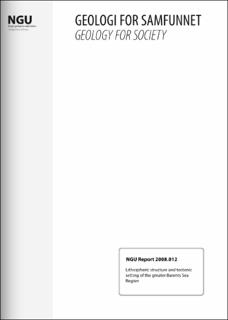Lithospheric structure and tectonic setting of the greater Barents Sea Region
Report

Åpne
Permanent lenke
https://hdl.handle.net/11250/2664765Utgivelsesdato
2008Metadata
Vis full innførselSamlinger
- Rapporter [5064]
Sammendrag
The Barents Sea is characterised by deep basins in the western and eastern Barent Sea, and large-scale differences in the lithospheric structure, which reflect the different tectonic history and basin forming processes. The western Barents Sea is associated with typical rift basins, while the eastern Barents Sea features large-scale megabasins, which are not typical rift basins. Isostatic as well as seismological studies point towards a heterogeneous upper mantle with high-density material underlying the megabasins. A global study of large-scale basins shows that isostatic balance is often achieved by densification of the lower crust or upper mantle. These structures are expressed in geoid anomalies, but are associated with small density contrasts, which make detailed imaging difficult. However, the high-density structures in the upper mantle appear to have a generic link to the basin formation.\rThe anomalies in the Barent Sea point towards the presence if an intra-crustal intrusive along the transition zone between the rift basin setting to the megabasin setting, which is also visible in the gravity signal and isostatic results. While the eastern Barents Sea appears to be under Timanian influence, the western Barents Sea is clearly influenced by Caledonian tectonic events and the Mesozoic break-up of the North Atlantic region, as also evident from detailed basement models based on seismic and potential field interpretation. Studies of regional isostatsy are as yet not conclusive, but show the importance of the intra-crustal density distribution in models at the lithospheric and basin scale.
